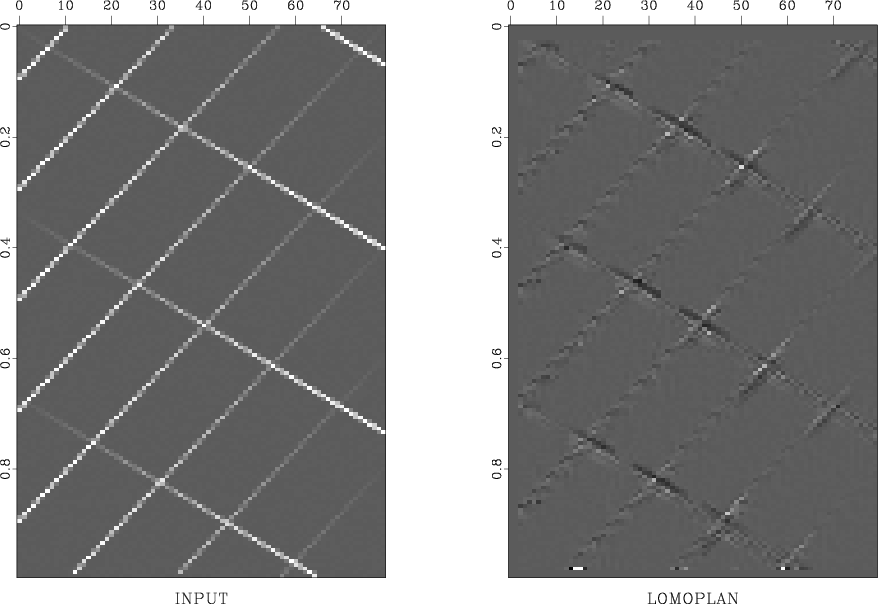|
|
|
|
Plane waves in three dimensions |

|
|---|
|
conflict
Figure 5. Conflicting dips before and after application of a local monoplane annihilator. |
|
|
I could rebuild Figure 5 to do a better job of suppressing monodip areas if I passed the image through a lowpass filter, and then designed a gapped deconvolution operator. Instead, I preferred to show you high-frequency noise in the place of an attenuated wavefront.
The residual of prediction-error deconvolution tends to have a white spectrum in time. This aspect of deconvolution is somewhat irritating and in practice it requires us to postfilter for display, to regain continuity of signals. As is well known (PVI, for example), an alternative to postfiltering is to put a gap in the filter. A gapped filter should work with 2-D filters too, but it is too early to describe how experimenters will ultimately choose to arrange gaps, if any, in 2-D filters. There are some interesting possibilities. (Inserting a gap also reduces the required number of CD iterations.)
|
|
|
|
Plane waves in three dimensions |